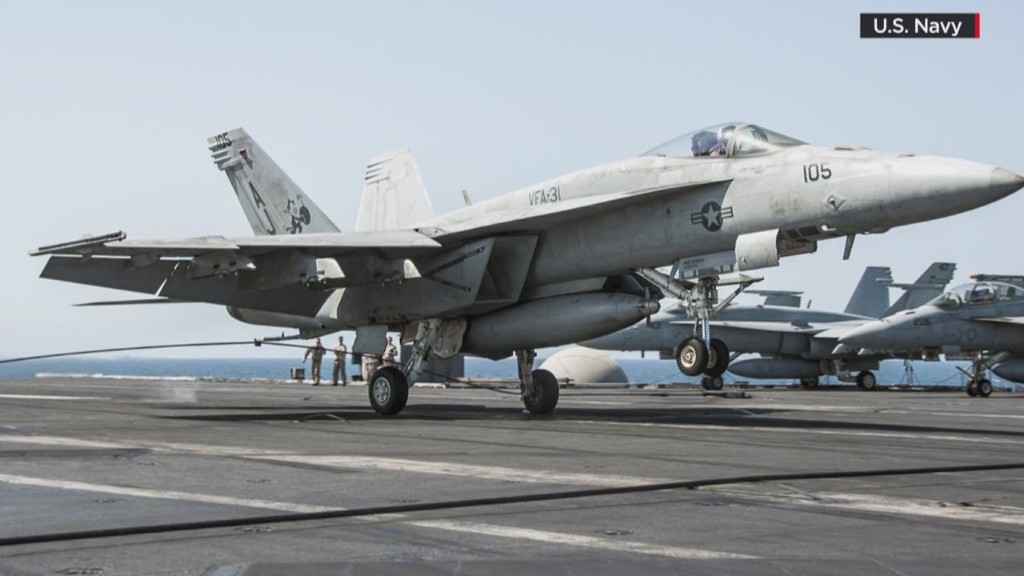
Ahead of Sunday's "60 Minutes," CBS said the newsmagazine would be airing "some of the most disturbing footage in its 47-year history."
As it aired, viewers by and large agreed that it was disturbing, but also necessary.
The footage was from an August 2013 sarin gas attack in Syria. While the mass slaughter received widespread news attention at the time, "60 Minutes" investigated further and interviewed survivors.
The resulting report included images that are typically deemed too horrific to televise: children suffering from the effects of the gas, some of them dying, some of them already dead.
While many have blamed President Bashar al-Assad's forces for the attack, others dispute this.
"A year and a half later," correspondent Scott Pelley said, "no one has been held responsible."
The report shocked some of the newsmagazine's most loyal viewers. But reactions to the decision to air the footage appeared to be overwhelmingly supportive, according to a review of Twitter and Facebook comments on Sunday night.
During the East Coast airing, comments on Twitter about "60 Minutes" were more than 90% supportive of the decision.
"Sobbing in my living room. Thank you for opening my eyes," one viewer wrote to the newsmagazine.
Another viewer called it "heart-breaking, gut-wrenching, nauseating, but necessary."
A third said the segment was "so hard to watch, but I stuck with it out of respect to victims."
A relatively small number said they thought the images were inappropriate for network TV, particularly in the 7 p.m. hour.
One viewer tweeted at Pelley that the video was "manipulative, porno journalism."
Another wrote to CBS: "Who wants to see such horrific atrocities?"
Pelley prefaced the report by saying, "If you have young children watching right now, usually that's a good thing, but this story is not for them. The pictures you are about to see are agonizing. This will be hard to watch, but it should be seen."
Some of the close-up shots made clear the barbarity of the attack. Victims struggled to breathe.
"It felt like somebody was tearing up my chest with a knife made of fire," said Kassem Eid, a survivor Pelley interviewed for the segment.
Other television networks, including CNN, the owner of this web site, have previously shown graphic footage of the aftermath of the sarin gas attack. (Here is one example from CNN in September 2013.)
There are dozens of raw videos on YouTube and other web sites.
But CBS spotlighted the attack by following up more than a year later and by deciding to put the pictures in front of the big, loyal "60 Minutes" audience. The newsmagazine usually reaches 10 to 15 million viewers a week.
Fellow journalists generally praised the network for the report.
Nick Schifrin, a Middle East correspondent for Al Jazeera America, said the report had "nothing that new," but was nonetheless a must-watch because of its "heartbreaking storytelling."
Newsweek contributing editor Matthew Cooper called the story "chilling" and sent kudos to CBS.
"Deciding what to show must have been agonizing," he tweeted.
Pelley said nothing was omitted. In an interview for the CBS web site that explained the decision-making, he said, "If you don't see it, I don't believe the impact truly hits you."
The instant feedback showed that at least some in the audience appreciated that. Some of the online commenters said they had to turn away, but respected the decision to broadcast the footage.
Dean K. Lieberman, press secretary to Sen. Dianne Feinstein, who serves on the Senate Select Committee on Intelligence, suggested the footage was crucial because "there are no words to describe" the 2013 attack.
The CBS report, he said in a series of tweets on his personal account, reminds people of the "power of video journalism: the ability to horrify us, shock our conscience."


